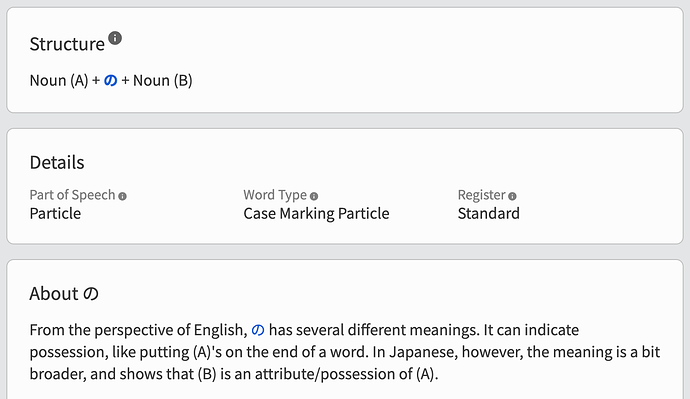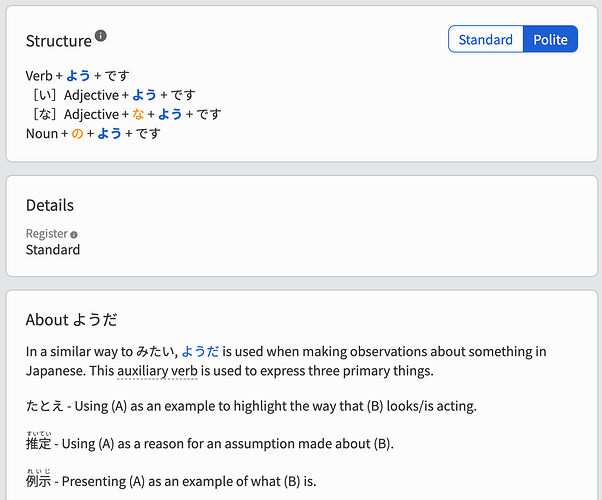In general, I like the way the lessons often use (A) and (B) as placeholders for a grammatical construct. But the syntax isn’t always explained up front. For example, a “good” lesson is pictured below. Notice that the Structure section clearly identifies where (A) and (B) belong. And then in About section, any references to (A) and (B) are unambiguous.
And now, a “bad” lesson shown below. Maybe I’m missing something very obvious, but I was confused after this lesson. The About section references (A) and (B), but it’s not clear where those things fit in the structure. I can kind of guess, using the examples. And maybe I’m supposed to. But if that is the case, then calling these things (A) and (B) seems unnecessary and adds to the confusion. The sentences in the About section would read more clearly in this case simply saying something like “Using one thing as an example to highlight the way another thing is acting”.
And as a much less important sidenote, I found the rapid introduction of たとえ, 推定, and 例示 confusing as well. Am I supposed to remember those words and concepts?



